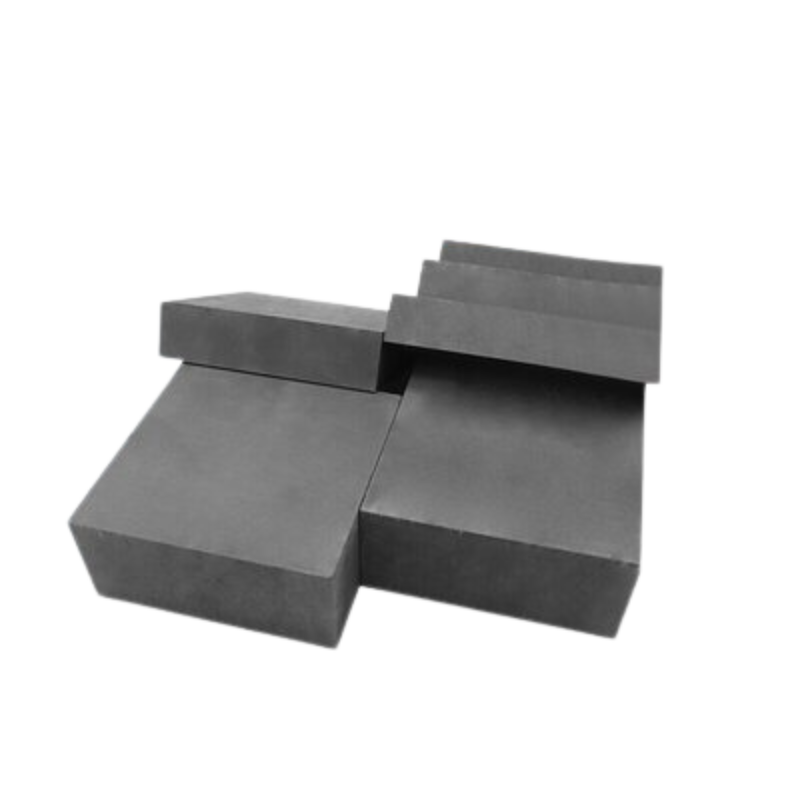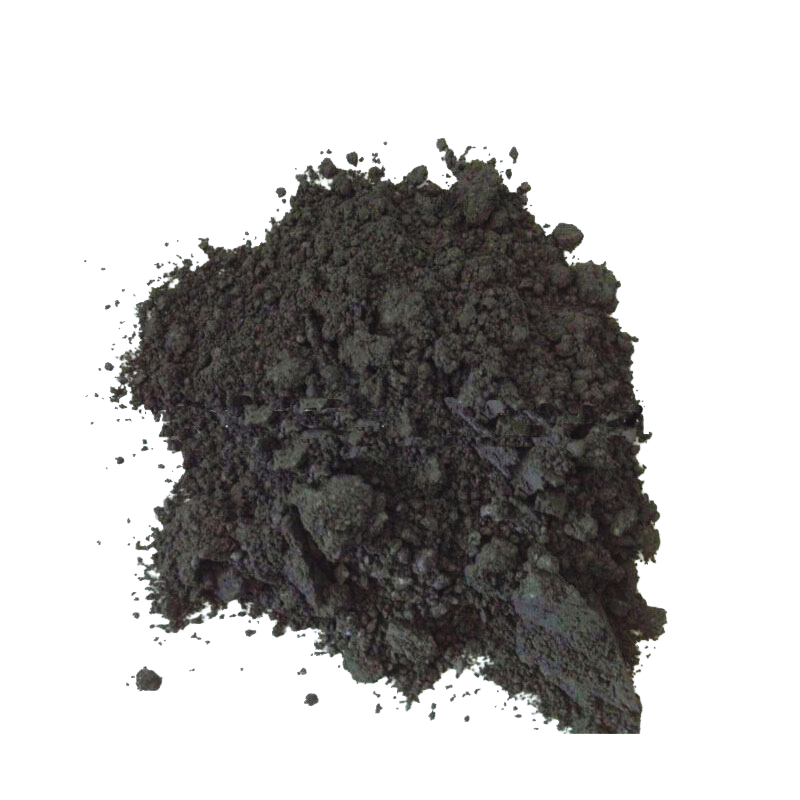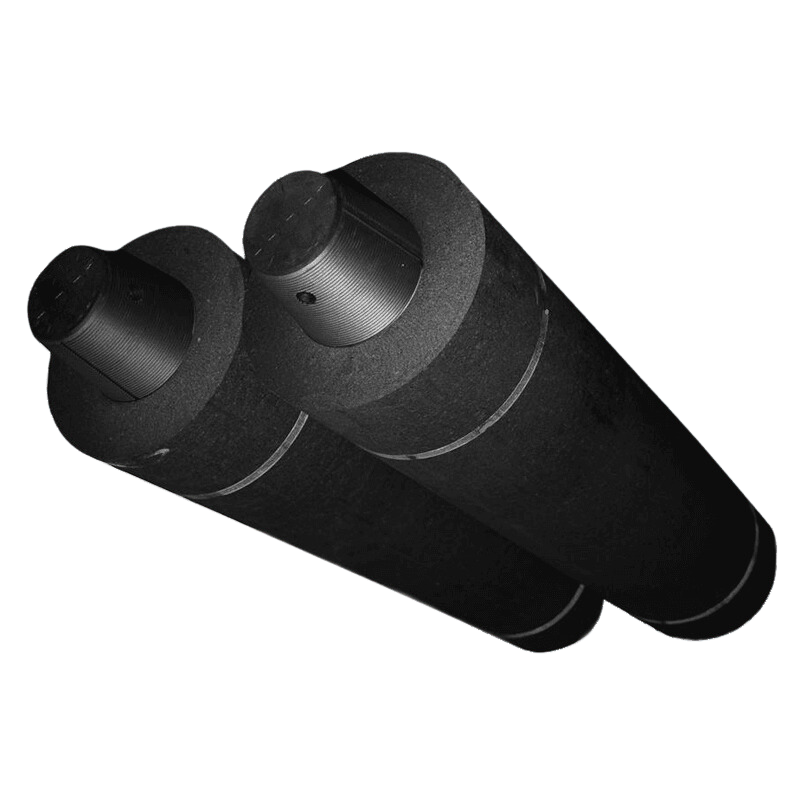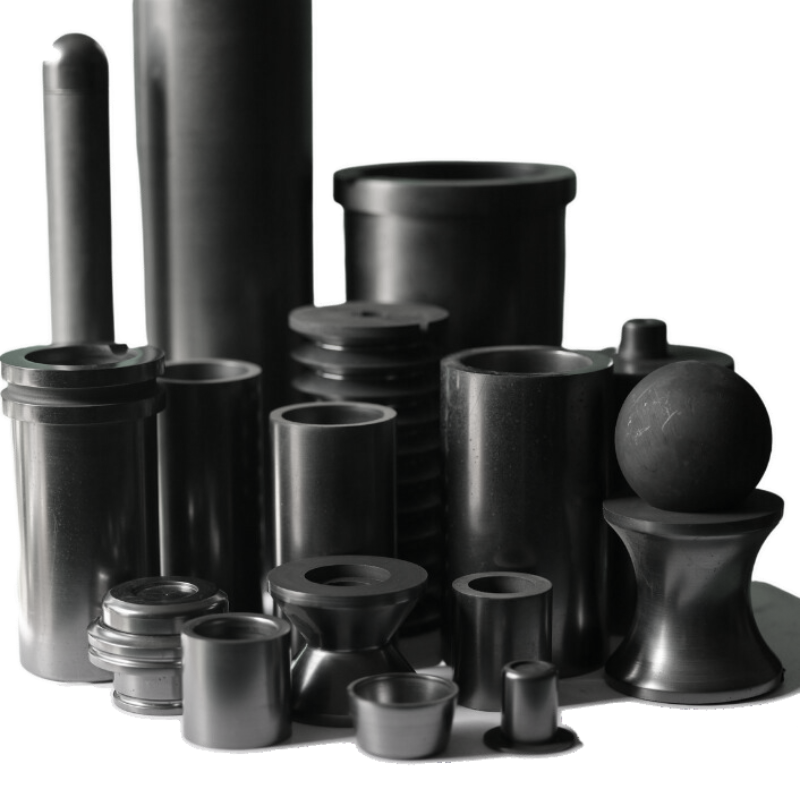Due to its many excellent properties, graphite finds widespread application in various industrial sectors such as metallurgy, machinery, electrical, chemical, textile, and defense industries.
Refractory Materials
One of the primary uses of graphite is in the production of refractory materials, including refractory bricks, crucibles, continuous casting powders, mold cores, mold wash, and high-temperature resistant materials. In recent years, two significant developments in the refractory materials industry are the extensive use of magnesia-carbon bricks in steelmaking furnaces and the application of alumina-carbon bricks in continuous casting. This links graphite refractory materials closely with the steelmaking industry, which consumes a substantial portion of refractory materials worldwide.
Magnesia-Carbon Bricks
Magnesia-carbon refractory materials were successfully developed in the mid-1970s in the United States. In the late 1970s, Japan’s steelmaking industry began using magnesia-carbon bricks in water-cooled electric arc furnaces. Currently, magnesia-carbon bricks are widely used in steelmaking around the world and have become a traditional use of graphite. In the early 1980s, magnesia-carbon bricks began to be used in the lining of oxygen top-blown converters.
Alumina-Carbon Bricks
Alumina-carbon refractory materials are mainly used in continuous casting, billet self-positioning pipelines, underwater spray pipes, and oil well perforation tubes. In Japan, over 50% of steel is produced using continuous casting, and in the UK, this figure is over 60%.
Crucibles and Related Products
Graphite is used to manufacture formed and refractory crucibles and related products such as crucibles, retorts, stoppers, and nozzles. These products exhibit high refractoriness, low thermal expansion, stability when exposed to metal infiltration and erosion during metal smelting, good thermal shock stability at high temperatures, and excellent thermal conductivity. Therefore, graphite crucibles and related products are widely used in direct metal melting processes. Traditional graphite clay crucibles are made with flake graphite containing more than 85% carbon, typically with a flake size greater than 80 mesh. Recent improvements in crucible production technology abroad include greater flexibility in the type, flake size, and quality of graphite used. Additionally, silicon carbide graphite crucibles have replaced traditional clay graphite crucibles, driven by the introduction of constant pressure technology in the steel industry. This technology allows for the use of smaller flake graphite. In clay graphite crucibles, large flake graphite with a carbon content of over 85% accounts for about 50%, whereas in silicon carbide graphite crucibles, large flake graphite content is only 10%, and the graphite carbon content is reduced to 40-50%.
Steelmaking
Graphite and other carbonaceous materials are used in the steelmaking industry as carburizing agents. The range of carbonaceous materials used for carburizing includes artificial graphite, petroleum coke, metallurgical coke, and natural graphite. Worldwide, the use of graphite as a carburizing agent remains one of the primary applications of earthy graphite.
Electrical Conductive Materials
Graphite is widely used in the electrical industry for electrodes, brushes, carbon rods, carbon tubes, the positive electrodes of mercury rectifiers, graphite gaskets, telephone parts, and the coatings of television picture tubes. Among these, graphite electrodes are the most widely used. In the smelting of various alloy steels and ferroalloys, graphite electrodes are used. A powerful current passes through the electrodes into the melting zone of the furnace, creating an arc that converts electrical energy into heat, raising the temperature to around 2000°C, thereby achieving melting or reaction. Additionally, in the electrolysis of magnesium, aluminum, and sodium, graphite electrodes are used as anodes in the electrolytic cell. Graphite electrodes are also used as furnace head conductive materials in electric resistance furnaces for producing silicon carbide. The graphite used in the electrical industry must meet high standards for particle size and grade. For example, alkaline batteries and some special electric carbon products require graphite with a particle size controlled between 100-200 mesh and a grade of over 99%, with harmful impurities (mainly metallic iron) kept below 0.01%. The graphite used in television picture tubes must have a particle size of less than 7 microns.
Wear-Resistant and Lubricating Materials
In the mechanical industry, graphite is often used as a lubricant. Lubricating oil cannot be used under high-speed, high-temperature, and high-pressure conditions, whereas graphite wear-resistant materials can operate at temperatures of 200-2000°C and at very high sliding speeds (up to 100 m/s) without using lubricating oil. Many devices for transporting corrosive media are made with graphite materials for piston rings, seals, and bearings, which operate without the need for lubricating oil. Graphite milk is also a good lubricant for metal processing (such as wire drawing and tube drawing).
Corrosion-Resistant Materials
Graphite has excellent chemical stability. Specially processed graphite has properties such as good corrosion resistance, good thermal conductivity, and low permeability, making it widely used in the production of heat exchangers, reaction tanks, condensers, combustion towers, absorption towers, coolers, heaters, filters, and pumps. These devices are used in petroleum refining, wet metallurgy, acid and alkali production, synthetic fiber, paper making, and other industrial sectors, saving a considerable amount of metal.
Casting, Molding, and High-Temperature Metallurgical Materials
Graphite’s small expansion coefficient and ability to withstand rapid cooling and heating changes make it suitable for use as molds for glassware. Using graphite results in castings of black metals with precise dimensions, smooth surfaces, high yield, and minimal or no further processing required, thereby saving a significant amount of metal. In powder metallurgy processes for producing hard alloys, graphite materials are typically used to make molds and sintering boats. Graphite is also used to make crucibles for growing single crystal silicon, containers for zone refining, brackets, fixtures, induction heaters, and other components. Additionally, graphite can be used as a heat-insulating board and base for vacuum metallurgy, as well as tubes, rods, plates, and grids for high-temperature electric resistance furnaces.
Nuclear and Defense Industries
Graphite has good neutron moderation properties and was first used as a moderator in atomic reactors. The uranium-graphite reactor is currently one of the most widely used types of atomic reactors. The moderator material in power reactors should have a high melting point, stability, and corrosion resistance, and graphite meets these requirements. Graphite used in atomic reactors must be very pure, with impurity content not exceeding a few parts per million, particularly with boron content below 0.0001%. In the defense industry, graphite is also used to make nozzles for solid-fuel rockets, missile nose cones, parts for space navigation equipment, heat insulation materials, and radiation shielding materials.
Anti-Scale and Anti-Rust Materials
Graphite can prevent boiler scaling. Tests by relevant units have shown that adding a certain amount of graphite powder to water (about 4-5 grams per ton of water) can prevent scaling on boiler surfaces. Additionally, coating graphite on metal chimneys, roofs, bridges, and pipelines can prevent corrosion and rust.
New Uses of Graphite
With the continuous advancement of science and technology, many new uses for graphite have been developed. Flexible graphite products, also known as expanded graphite, were developed in the 1970s. The United States successfully researched flexible graphite sealing materials, solving the leakage problem of atomic energy valves. Subsequently, Germany, Japan, and France also began to research and produce this product. In addition to the properties of natural graphite, these products also have special flexibility and elasticity, making them ideal sealing materials widely used in petrochemical, atomic energy, and other industrial fields. The international market demand is growing year by year.





